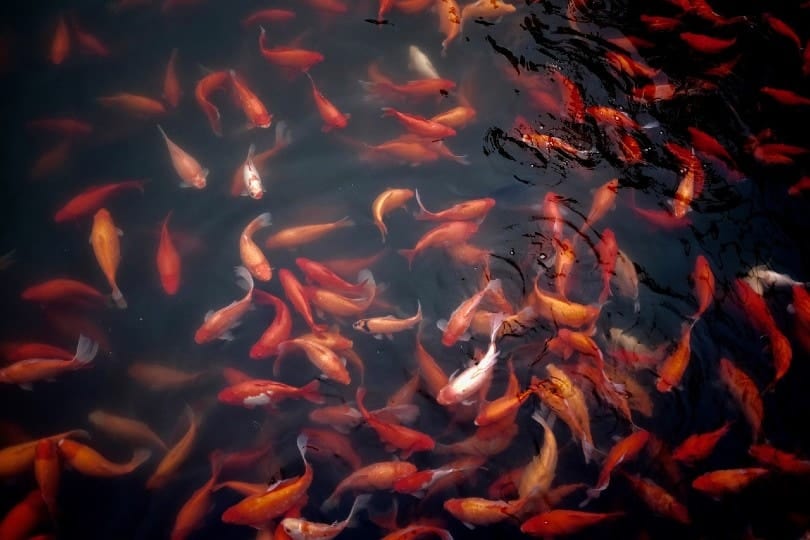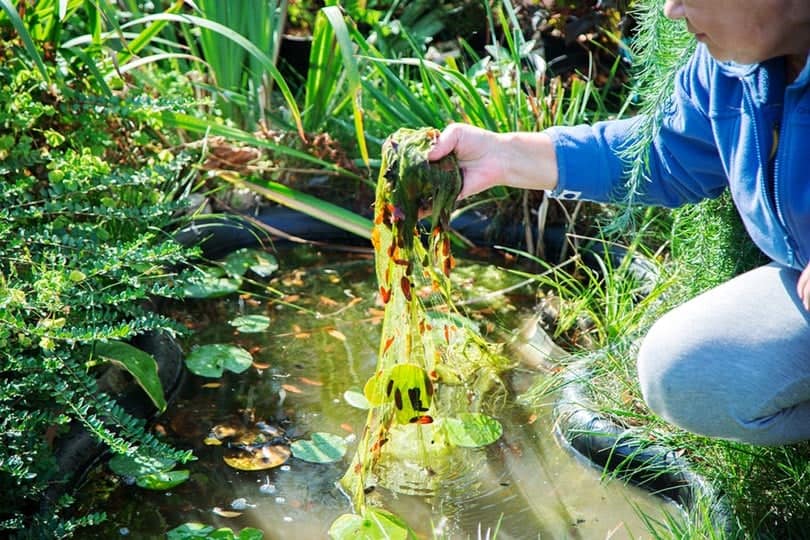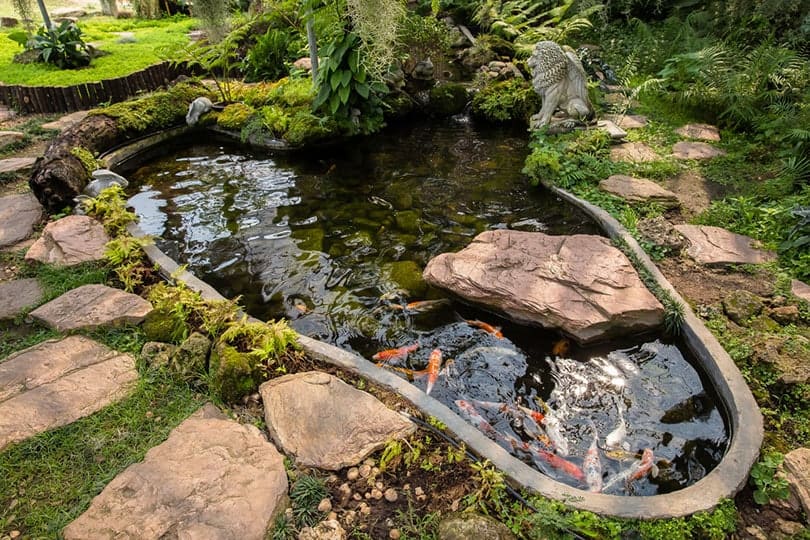Keeping an outdoor goldfish pond takes a careful balance of maintenance and a hands-off mindset to maintain. Too little maintenance can lead to water quality issues, while too much maintenance can be stressful for your fish and absorb a ton of your time.
One of the more difficult things to find the perfect care and balance of is winterizing your pond properly. If you don’t winterize your pond, you may end up with a broken pond pump or fish that get frozen in without oxygen. If you over-winterize your pond, you may have a huge mess to clean up in the spring.

Why is Winterizing a Pond Important?
Winterizing your pond serves many purposes. Not only does it protect your equipment over the winter, but it also helps keep things clean enough to keep you from being knee-deep in the pond in the dead of winter. If you live in an area where your pond water may freeze, then leaving pond pumps running through the winter can significantly shorten the lifespan of your expensive equipment.
A properly winterized pond will keep your fish safe while allowing them to feel the seasonal changes, which can encourage spawning once warm temperatures come back around. A properly winterized pond can also help support your pond plants over the winter, allowing them to come back healthy and full in the spring.

How to Winterize Your Outdoor Goldfish Pond
1. Prepare your goldfish.
To best prepare your goldfish for cold weather, you should begin making adjustments to their feeding schedule as temperatures begin to drop. As the water cools, your goldies will require less frequent feedings.
It’s ideal to transition them from warm-weather food to cold-weather food to help them physically prepare for the winter. Once water temperatures reach around 50–55°F, your goldfish will no longer be capable of properly digesting foods. By transitioning their food as it begins to cool outdoors, you’ll help fatten them up for the winter, essentially allowing them to maintain their health and body weight.
2. Clean the pond.
Removing dead plants, leaves, and other debris from your pond will help the water stay clean and healthy over the winter. Once fall begins, you’ll likely have an uptick in the number of leaves and branches ending up in your pond. Cleaning the pond will not only prevent these things from decomposing in the pond over the winter, fouling the water, but it will also remove any waste and detritus that has settled onto the bottom of the pond.
Keep in mind that you will likely be turning off your pond’s filtration during the winter, so fish waste can begin building up. By ensuring your pond is clean before the filter is off, you’ll reduce the risk of water quality becoming poor over the winter.

3. Place leaf netting.
Leaf netting isn’t a requirement for winterizing your pond, but it can be a beneficial tool to help reduce the number of leaves and other debris that end up in your pond. This can be especially beneficial if your water has gotten cold, but trees in your area are still dropping leaves. Leaf netting will catch leaves, keeping them from getting into the pond and breaking down over the winter. This will save you the discomfort of being in the pond in the middle of winter trying to remove excess leaves.
4. Empty the skimmer.
If you have a pond skimmer, you’ll need to empty it frequently in the fall. If you don’t have leaf netting, you’re likely to need to empty it as frequently as every day or two to ensure leaves aren’t building up in the pond. You may need to continue to empty your skimmer as long as leaves are falling, especially if you don’t have leaf netting.

5. Prep your pond plants.
Trim back the dead parts of your pond plants to prepare them for the winter. Some plants may need to be moved to the deeper parts of your pond to keep them from fully freezing and dying over the winter. At a minimum, you should remove dead and dying parts of plants to keep them from fouling the water as they decompose over the winter.
6. Turn off and remove your pumps.
If you live in an area where temperatures drop below freezing, then you almost certainly need to remove your pond pumps over the winter. Pond pumps can freeze, which can break them or significantly shorten their lifespan. Any kind of pumps or electronic fixtures that live in your pond will need to come out for the winter.
Make sure to allow your pumps to dry thoroughly before putting them away. They should be kept somewhere indoors where they won’t be exposed to below freezing temperatures. For many people, a shed, garage, or attic will suffice.

7. Add cold water bacteria.
Cold water bacteria can be a real lifesaver for your pond during the winter. This bottled bacteria is formulated to survive in water that is above freezing, so it will survive much of the winter. It helps consume waste products that may begin building up in the pond over the winter. Cold water bacteria basically functions as a form of biological filtration for your pond throughout the winter in the absence of your other filters and pumps. Make sure to read the bottle instructions, though, because these bacteria often need to be added regularly throughout the season.
8. Add a de-icer.
Goldfish are hardy fish that can survive in very cold temperatures. In fact, they can even survive below freezing temperatures, but they cannot survive in an environment with no oxygen. If your pond freezes completely over, there is no longer oxygen exchange occurring, which can cause your fish to suffocate.
A pond de-icer is not a heater and will not warm the water temperature significantly. Pond de-icers function by warming only a small area of water just enough to keep it from freezing. This allows oxygen exchange to continue throughout the winter and keeps your fish safe.

In Conclusion
Winterizing your pond can be a time-consuming task, but once it’s taken care of, you will have little to no work to do with your pond throughout the winter. Winterizing is a great way to protect your investments, whether that is expensive pond equipment or expensive fish. The good news is that your goldfish are likely hardy enough to survive just about anything the winter throws at them, but you can do your part to set them up for success by following these steps to winterize your pond.
Featured Image Credit: weerastudio, Shutterstock
